Tears and Joy: “Gloria: A Life” and What’s Next for a 21st Century Women’s Movement
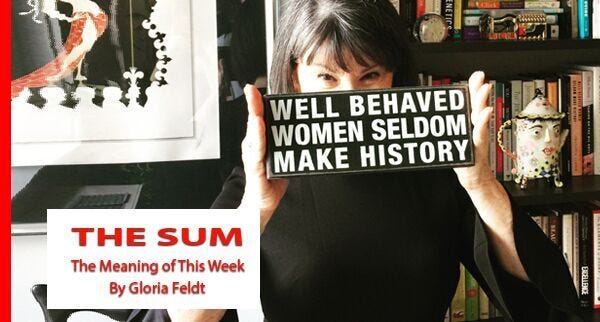
Issue 78 — December 17, 2018
Tears welled up many times. I could have had a good sloppy cry as I watched the play Gloria: A Life, had I not needed to keep it together in order to participate in the Talking Circle with Steinem and the audience after the play.No, the play isn’t about me. It’s the story of the best-known feminist activist leader, Gloria Steinem, and it traces the second wave feminist movement in the U.S. This particular matinee performance on December 15 was a benefit for Take The Lead.
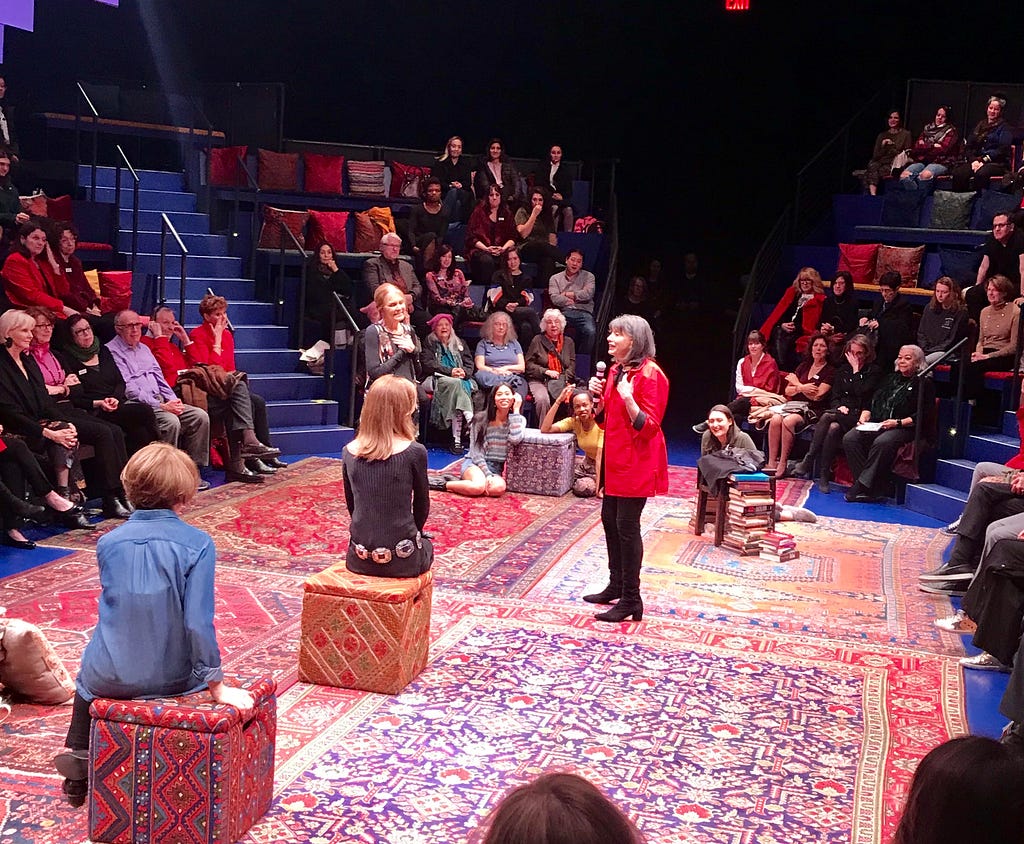
Glorias and the cast in the Talking Circle. It’s a circle because Steinem says “We are linked not ranked.”
The vivid historical images coupled with Christine Lahti’s superb performance as Gloria made for a powerful history lesson, and a reminder of the work still to be done.Yet many parts of it were about me, metaphorically. It brought poignant memories — not sad ones because I believe it is a privilege to be able to work for equality and justice, but the play did cause me to relive hard times and victories and to remember the significance of the history of which I have been blessed to play a small part.
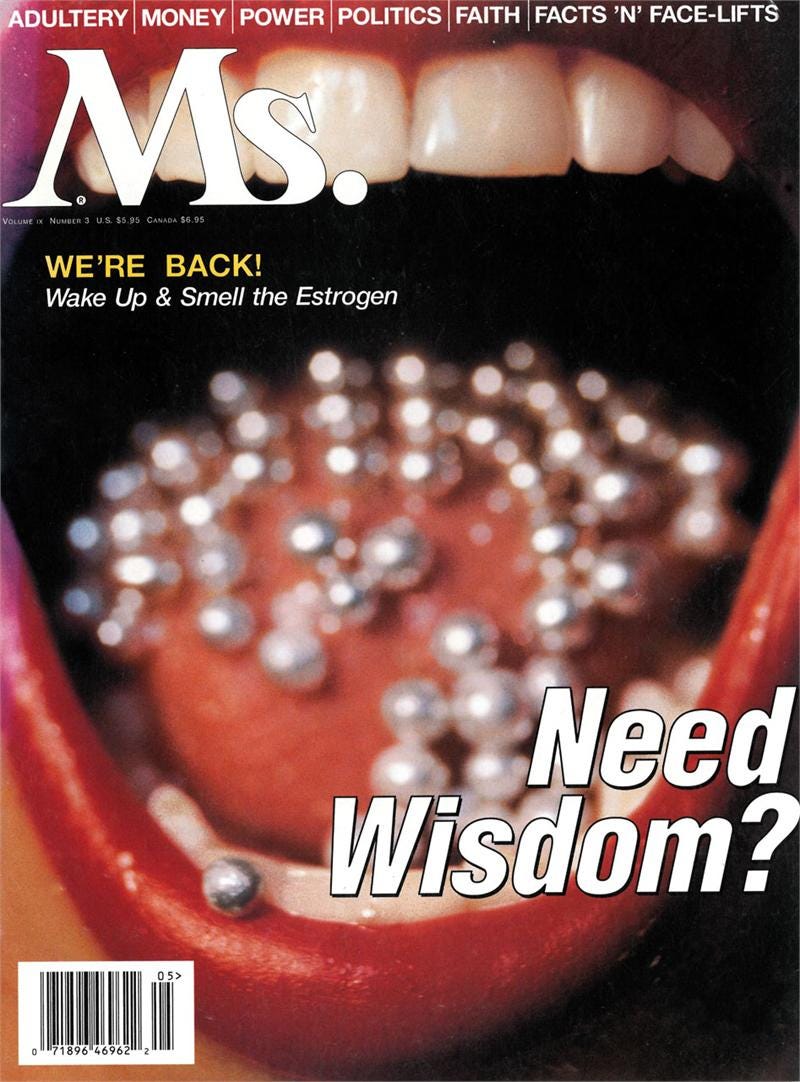
This was the Ms. Magazine cover from its 1999 relaunch. I hosted a launch party for the magazine at that time — another moment when I couldn’t believe I was in the same room with many of its founders, including Steinem.
Who knew, when I was that desperate housewife in West Texas and somehow became aware of Ms. Magazine, co-founded by Steinem in 1972, and learned from its pages that I was not alone, that I would someday join Gloria Steinem’s Talking Circle in New York City at the Daryl Roth Theatre?I couldn’t even have imagined it. Gloria Marie (Steinem) and Gloria Ann (Feldt) Gloria and I laughingly call each other “the other Gloria” but everyone knows who gets to claim the name when someone says, simply, “Gloria.”And yes it’s challenging at times, and also affirming, for me to have the same name as someone with that level of fame even though I’m often called a feminist icon too — a term I take to mean someone who has been in the fray for women’s rights for a very long time. Gloria Steinem is the first to share the credit for advances. I have always been impressed by her kindness and generosity in that way. Those are qualities that show up in the play’s choices of other characters there to tell their parts of the story, along with representing Steinem’s commitment to intersectionality and inclusion.
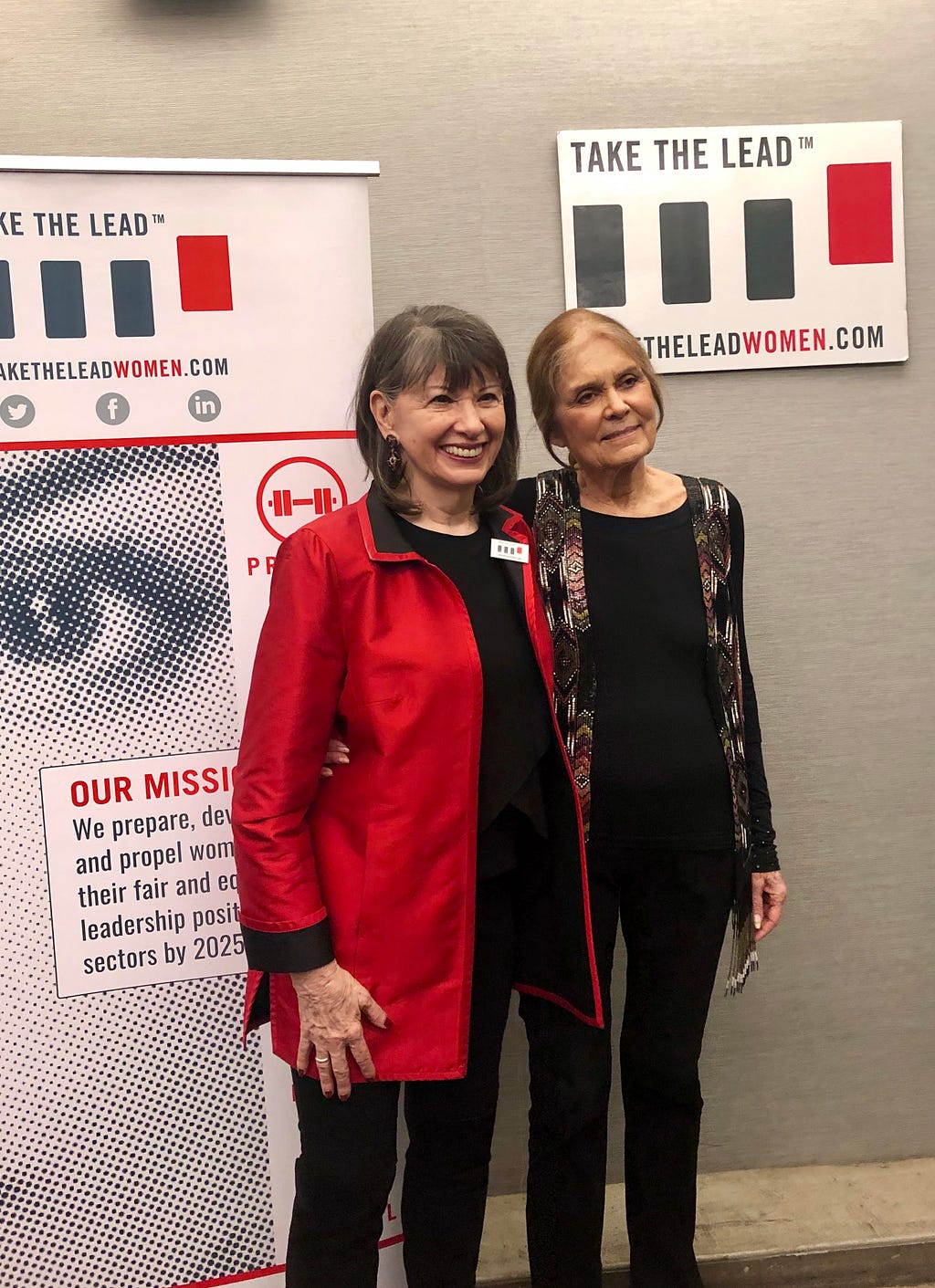
After the performance ended, it became evident just how profoundly moved many in the audience had been — male and female alike, and across the generations. Women my age relived what we had to go through to be able to get a job, make marital abuse and rape a crime, be able to decide whether and when to have children, and, well, to be taken seriously as a human being with a brain in any realm.A dear friend a generation younger whose mother and I had been friends and co-conspirators for civil and women’s rights in West Texas during those yeasty years when we were smashing open doors and changing laws with regularity, said how much he wished she were alive to see the play.
He stopped himself and said teary eyed, “But she is here in me and I have to carry it on.” Then I wept too.Exactly. And that’s why knowing our history is so important. And it continues to the next generations. Maggie Castrey brought her 13-year-old granddaughter Emma from Missouri for just this reason. Cara Czarnecki and her daughter flew in from Arizona and they were just one of many mother-daughter and whole family groups there from all over the country.
A number of generous donors had purchased tickets so we could bring young women who couldn’t have otherwise attended. One of those recipients wrote afterward, “It was a really wonderful show and experience — a history and practice lesson in organizing, performed beautifully and convincingly. A great line that really resonated — one of the last of the play — was, ‘Don’t look up, look out at each other and find shared power.’ And Gloria Steinem herself came out to lead an audience conversation after the play! She fielded some great questions, some from the full troop of Girl Scouts in the audience. Take The Lead seems like a fantastic organization — I’m so glad to now know more about them.”
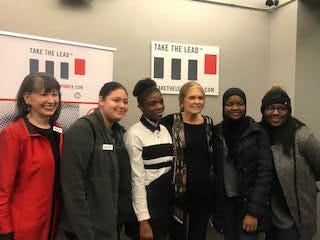
I am thrilled that so many people now do know more about Take The Lead, and are expressing their desire to get involved with our mission of preparing and propelling women to parity in leadership across every sector by 2025 after seeing “Gloria, a Life.”That is the necessary 21st century wave of the women’s movement — to gain equal power (defined as the Power TO, not over), equal position, equal pay. Without that, we won’t end sexual abuse or the economic disparities that keep many women and children in poverty. With it, we will have a healthier, more prosperous world.What it takes to make and sustain change“Injustice is very profitable,” observes Heather Lagerman in a tweet, quoting Steinem.
“Injustice is very profitable “The hardest part is realizing we are complicit in our own humiliation” Gloria Steinem ”
This is so true, it hurts. Gender-based injustices have been so deepl embedded in the culture that it took visionary, boundary breakers like Steinem to see them. But it was also important that they were in proximity to the most influential media, and better yet, were part of that influential media, albeit that they suffered the same kinds of discrimination as the rest of us who were awakening simultaneously out in the hinterlands.
Often, as in my case, we were largely without others in our circles who shared the emerging vision of a more just and equal world. We’ve come so far. Yet progress can seem slow. And it is never linear. Each generation must speak in its own tongue and fight the injustices that affect it. Knowing the history is the first step to creating the future of our choice. The work goes on, and as my friend observed, it’s up to each of us to carry it forward.

